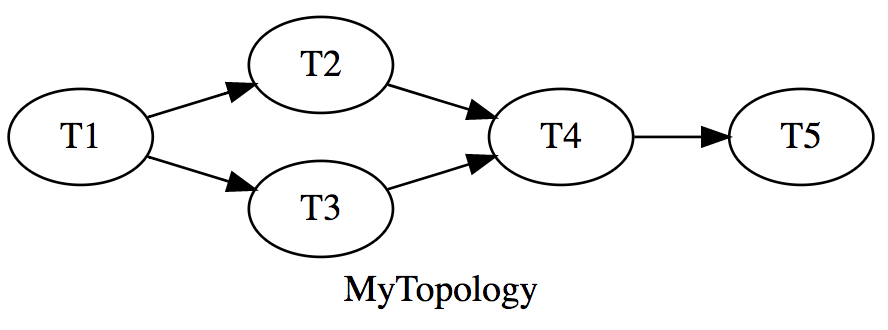Tempest is a message processing framework, written in Rust, and inspired by Apache Storm (hence the name).
Similar to Storm, this framework constructs Topologies for processing messages polled from a Source (i.e. Spouts).
Topologies are constructed as Pipelines (directed acyclic graphs) of Tasks (i.e. Bolts).
- Take high-level Apache Storm concepts and port them to Rust.
- Learn more about processing Redis Streams.
Take a look at the design doc for the basic view of how Tempest is structured.
A simple topology with a single task:
use tempest::prelude::*;
use tempest_source_redis::prelude::*;
// Source builder
type Source = RedisStreamSourceBuilder<'static>;
// Topology definition
struct MyTopology {}
impl Topology<Source> for MyTopology {
fn builder() -> TopologyBuilder<Source> {
TopologyBuilder::default()
.name("MyTopology")
.pipeline(
// Pipeline constructor
Pipeline::default()
.task(T1::default())
)
.source(
// Source constructor
Source::default()
.uri("redis://127.0.0.1/0")
.key("some-stream")
.group("some-group"),
)
}
}
static T1: &'static str = "T1";
#[derive(Default)]
pub struct T1 {}
impl task::Task for T1 {
fn name(&self) -> &'static str {
T1
}
fn handle(&mut self, _msg: Msg) -> task::TaskResult {
// Msg handling code goes here...
// Ack msg with an empty response
Ok(None)
}
}
fn main() {
// Run the topology package
// The run command will parse all cli args
rt::run(MyTopology::builder);
}Take a look at the book (coming soon) for more examples.
Topologies are defined as pipelines, which contain tasks & edges. An edge isn't required if the pipeline only has one task. Edges are defined by task.name.
For example, take this topology pipeline:
Assuming these tasks and static variables were previously defined, here's how you would declare the pipeline example above:
Pipeline::default()
.task(T1::default())
.task(T2::default())
.task(T3::default())
.task(T4::default())
.task(T5::default())
.edge(T1, T2)
.edge(T1, T3)
.edge(T2, T4)
.edge(T3, T4)
.edge(T4, T5)Take a look at these Tempest sources:
The Tempest Book goes over many of the details of how to package and run topologies.
Unfortunately, the book isn't hosted anywhere yet. You'll need to read the book markdown files for now.
-
This is alpha and hasn't seen a production installation (yet, at least by me).
-
Many more things need to be worked on to make this a more complete framework.
- Code is littered w/ TODO comments.
- Missing features:
Directorfor launching topologies, seeing stats, etc.Agentfor managing server installations and topology deployments.Clifor interacting with topologies, creating new projects, etc.
-
Many thanks to all the developers who've taken
Actixto where it is today. -
Dipstickprovided much inspiration for how theMetricscode ended up. -
Lastly, thanks to anyone whose contributed to any of the crates dependencies for this project!
